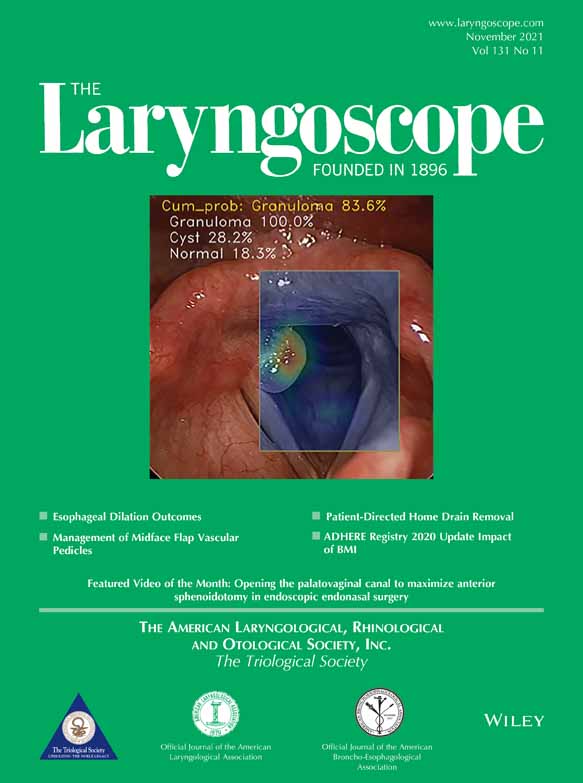Long-Term Outcomes of Inferior Meatus Augmentation Procedure to Treat Empty Nose Syndrome
The abstract corresponding to this manuscript was selected for a podium presentation at the Triological Society Virtual Meeting at COSM April 9th, 2021.
Editor's Note: This manuscript was accepted for publication on April 20, 2021.
The authors have no funding, financial relationships, or conflicts of interest to disclose relevant to this work.
Abstract
Objectives/Hypothesis
We sought to report the long-term, symptom-focused, prospective outcomes in empty nose syndrome (ENS) patients after undergoing inferior meatus augmentation procedure (IMAP) through use of four validated questionnaires: Empty Nose Syndrome 6-Item Questionnaire (ENS6Q), 22-item Sino-Nasal Outcome Test (SNOT-22), Generalized Anxiety Disorder 7-Item Scale (GAD-7), and Patient Health Questionnaire-9 (PHQ-9).
Study Design
Prospective case series.
Methods
A single-center prospective case series was performed for patients diagnosed with ENS who underwent IMAP between July 2017 and February 2020. Diagnosis of ENS was based on the following criteria: 1) reported discomfort with nasal breathing and/or paradoxical nasal obstruction after inferior turbinate reduction, 2) a positive ENS6Q score of at least 11, and 3) a positive cotton test. Questionnaire responses were recorded prior to surgery as well as 1, 3, 6, and 12 months postoperatively.
Results
Seventeen eligible patients were included. Mean ENS6Q scores were significantly reduced at all postoperative time points (p < .0001, p < .0001, p < .0001, p = .0003). Of the six ENS6Q subdomains, five (suffocation, dryness, sense of diminished airflow, nasal crusting, and nasal burning) were significantly reduced 1-year postoperatively (p < .0001, p = .0004, p = .0136, p = .0114, p = .0080, respectively). SNOT-22 scores were significantly reduced at all time points (p = .0021, p = .0227, p = .0004, and p = .0025). Of the SNOT-22 subdomains, the sleep subdomain was significantly reduced 1-year postoperatively (p = .0432). Low baseline GAD-7 and PHQ-9 scores were recorded at 7 and 9.4, respectively, and although scores at all postoperative time points were reduced, there was no statistical significance.
Conclusion
IMAP via implant of cadaveric rib cartilage provides significant, long-term improvements in ENS-specific and general sinonasal symptoms.
Level of Evidence
4 Laryngoscope, 131:E2736–E2741, 2021




